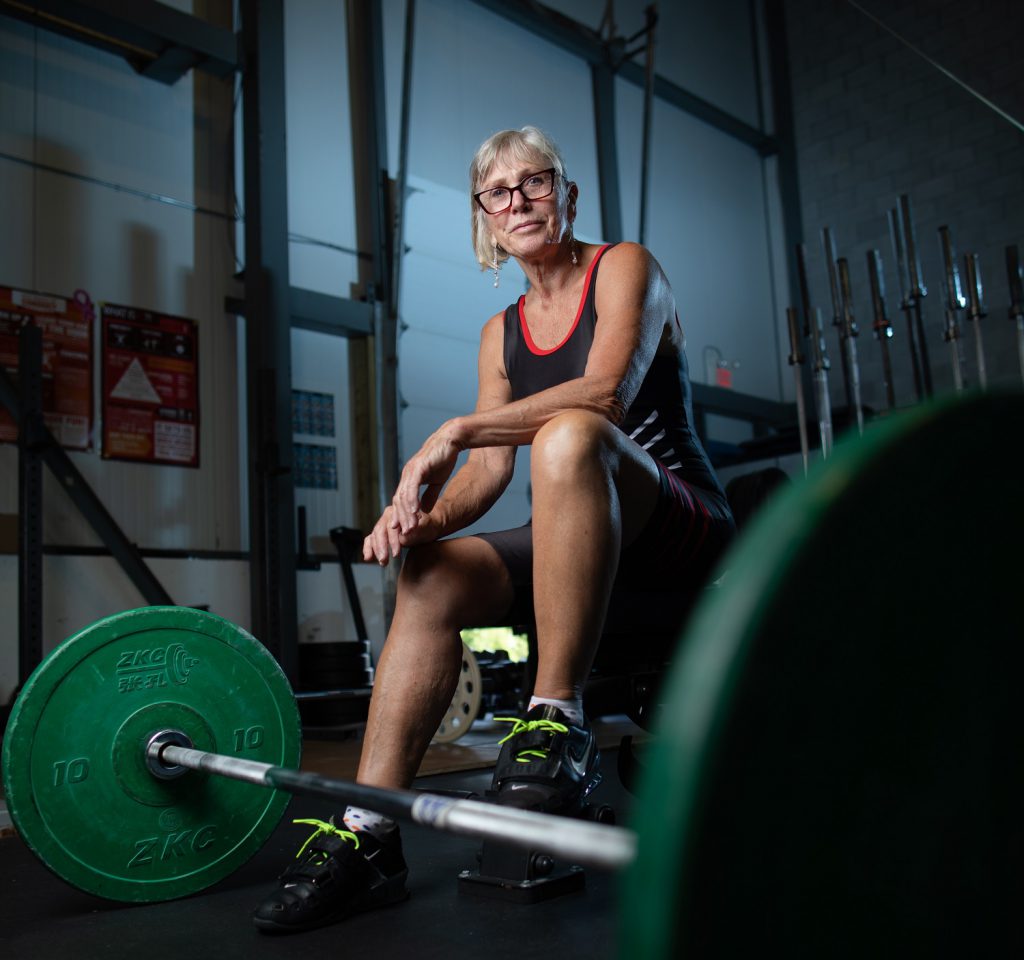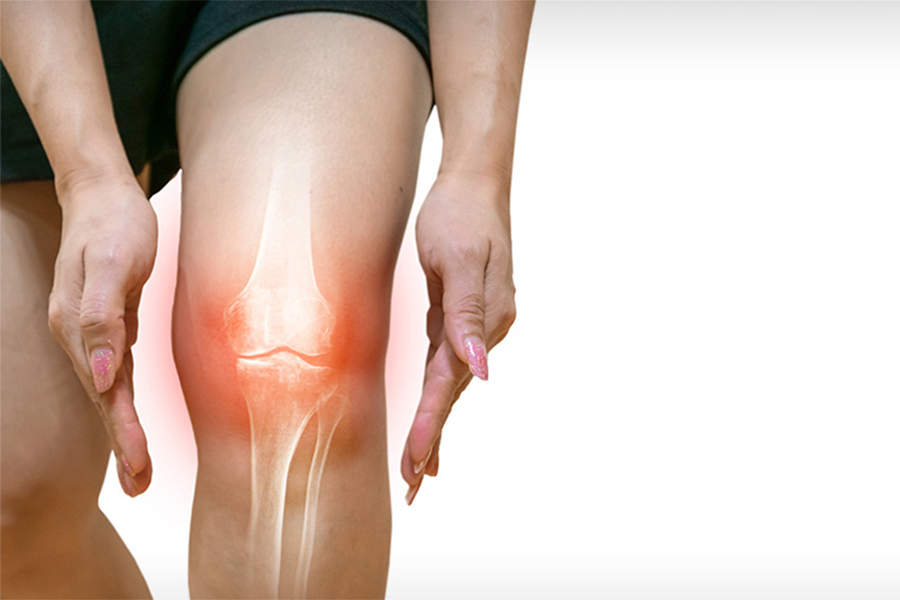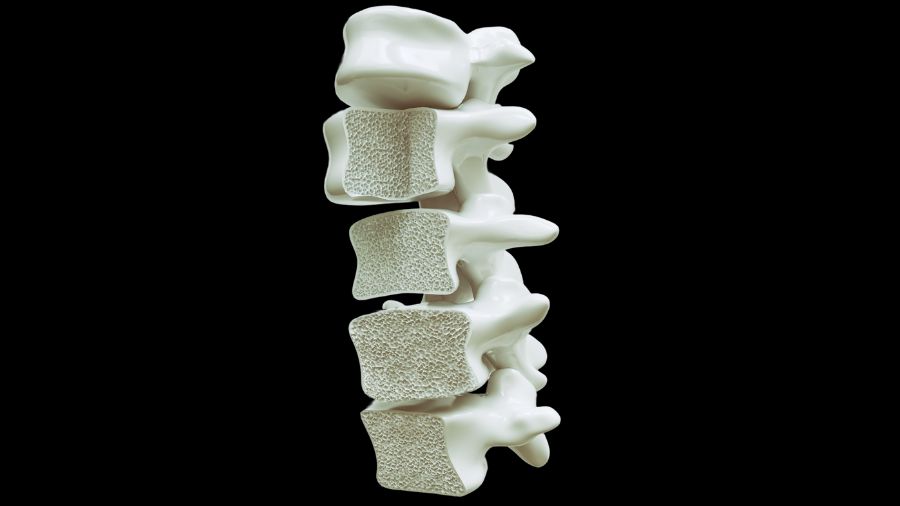
While she still feels the effects of osteoarthritis, long-time weightlifter Jill Miller continues to train and compete. (Photo by Tim Fraser)
When Jill Miller competed at the Pan American Masters Weightlifting Championships in Orlando, Fla., in late May 2019, hoisting an 88-lb barbell over her five-foot-two-inch frame, people watching would never have guessed she was due in a Toronto operating room five weeks later, for surgery on her arthritic right knee. Miller, who is 68 years old, has a high pain threshold. She could weather the tightness in the joint, but she also describes sudden pangs of
“a knife-like pain.” During the operation to repair her meniscus – the C-shaped disk of cartilage that cushions the knee and that breaks down in arthritis – her surgeon removed seven floating fragments of bone, adding up to some 13.5 centimetres. These fragments would get stuck
in her joint, locking it. “A lot of the time it wouldn’t hurt,” Miller recalls. “But when one of those pieces of bone shifted, eeoowww!”
And that was the good knee. Diagnosed with arthritis in 2012, Miller had the same surgery on her left knee last year – on top of cortisone shots, an injection of stem cells taken from her lumbar area and platelet-rich plasma to trigger healing. She shouldn’t even have been walking, her orthopedic surgeon, Dr. Darrell Ogilvie-Harris, at Toronto Western Hospital, told her. Four days after her July surgery, she was off the anti-inflammation drugs.
A Master Coach Developer under the Canadian National Coaching Certification Program for Weightlifting, Jill worked with Dr. Ogilvie-Harris and his team to develop a training and rehabilitation plan that would support her return to weightlifting and, eventually, competitio
Within a couple of weeks, she had returned to her gym in Collingwood, Ont., where she would gradually work up to her usual level. Walking long distances is challenging, and it still hurts to travel up and down stairs, but in late July she was in Peru, refereeing a weightlifting championship. “If I wasn’t a bit of a Pollyanna,” Miller admits, “I couldn’t do any of this. I wake up in the morning and it hurts.”
A LURKING EPIDEMIC
Miller is as typical as she is exceptional. One in six Canadians suffer from osteoarthritis (OA). By 2035, it will be one in four. In OA, the cartilage that cushions the bones in the body’s joints degenerates, leaving them to grind against each other. Knees, hips and spines are all common
sites, but OA can hit elbows, shoulders, even thumbs and toes. Age-related changes to joint function – cartilage becoming brittle, the loss of muscle mass – make people more susceptible,
but typically there is also a genetic predisposition or another factor such as obesity, a sedentary lifestyle or repeated injury.
Millions of Canadians live with OA – most of whom are not athletes like Miller. It lurks in many more, who may not yet feel its telltale signs: pain or stiffness in the joints, swelling and crackling sounds. By the time there is a diagnosis through X-ray or MRI, the disease has progressed, and the loss of mobility may eventually demand surgery, perhaps the replacement of a hip or knee. There is no way to reverse its damages; treatments only ease the pain.
However, as game-changing research from Krembil shows, long before this point, there are hints of OA at the cellular level: certain molecules, called microRNAs, floating undetected in joint tissue cells. As they increase, they wear down cartilage. If those molecules can be detected
so disease can be averted in the first place, it could transform lives. Early detection – and a treatment that modifies the disease, rather than just addresses the symptoms – is the Holy Grail among researchers. And the Arthritis Program at University Health Network is making
significant headway. Dr. Mohit Kapoor, the program’s research director and a senior scientist at Krembil, puts it succinctly: “Our mandate is to find a cure.”
In 2016, a team led by Dr. Kapoor, and included spinal surgeon Dr. Raja Rampersaud and rheumatologist Dr. Akihiro Nakamura, identified two significant microRNA molecules in tissue samples of patients with OA of the spine. If DNA molecules contain the cell’s genetic blueprint, RNA molecules are the messengers that translate that genetic information into protein production. MicroRNAs are tiny RNAs; they regulate gene expression by silencing or activating certain genes. With funding from the Campaign to Cure Arthritis, Dr. Kapoor’s team identified two microRNAs by studying the tissue of patients with mild, moderate and severe arthritis – an ambitious undertaking made possible by specialized technology at Krembil and by its massive
arthritis biospecimen biobank, one of the world’s largest, with some 150,000 tissue and fluid samples.
You have to get super lucky to discover something, but you also have to have the infrastructure in place – and patience.” Dr. Mohit Kapoor Research director, UHN Arthritis Program
One molecule, microRNA 181-5p, proved promising: the worse the osteoarthritis, the higher its levels were. To learn why, the researchers conducted a series of patient-cell studies and pre-clinical studies. “We started to understand that this molecule is produced in the cartilage, but breaks down the cartilage,” says Dr. Kapoor. Production is triggered by “an inflammatory sort of insult” to the cartilage – that is, injury, a pathological trigger or repeated strain. “And massive production of this molecule starts to damage the cartilage.”
This is what Miller would have been feeling when she went to her doctor with knee pain, as well as pain in her back and legs following an injury. That led to a diagnosis of arthritis of the back and knee. By the time she saw Dr. Ogilvie-Harris in Toronto, her back issues had improved greatly thanks to intensive physiotherapy and her own training – but she still had pain and loss of motion in the left knee.
THE ATHLETE’S DILEMMA
Miller has faced both the reward and risk associated with intensive sports: almost three decades of Olympic-style weightlifting have kept her healthy and fit. But being an athlete might have made her more vulnerable to OA due to injuries, including a partial tear of her ACL. As a past team physician for the Toronto Maple Leafs, Dr. Ogilvie-Harris has had many patients tear an ACL and end up with OA later in life.
Some researchers, including Dr. Kapoor’s lab, are pursuing ways to restore or regenerate the cartilage eroded by arthritis. In the three years since identifying microRNA 181-5p, the team has developed a blocker that relies on “anti-sense technology,” which essentially disables the molecule. The blocker has a comb-like structure that locks onto the molecule, preventing it from functioning. The hope is to one day inject it into patients’ joints. If it works, it will be the first treatment for OA that halts its progression. It has been effective in pre-clinical studies.
The Kapoor lab’s researchers, in conjunction with their orthopedic colleagues, are also working on a diagnostic blood test. “If you have a biomarker that can tell you that you are either at risk or you have osteoarthritis,” says Dr. Kapoor, “it’s like having a glucose test [for diabetes].” A blood test could also help doctors determine whether a surgical approach or physiotherapy, for instance, is best. To help develop this test, Krembil researcher Dr. Amanda Ali is examining blood samples to understand which microRNAs are present in which patients. The next step will be for Dr. Ali to collaborate with orthopedic surgeons, including Dr. Ogilvie-Harris, to study patients with an ACL tear. “We’re going to look at the microRNA piece before and after the surgery, and over the next six months to year, to see if we can predict which patients are going to run into trouble with arthritis,” says Dr. Ogilvie-Harris. If we can predict that, then we can show these changes in the blood.”
To do this, Dr. Ali is also applying cutting-edge next-generation sequencing – the technology, funded by the Campaign to Cure Arthritis, that sequenced the human genome – to hundreds
of patients’ blood samples. She’s looking at known microRNAs, but also entirely new, undiscovered ones. Dr. Ali, whose first post-doctoral project involved working with seniors with arthritis in London, Ont., is interested in how lab research translates into the real world. “It’s very important to me that the work I’m doing has some kind of relevance to helping people.”
THE FOOD FACTOR
A lot about osteoarthritis remains a mystery. We know that exercise, by building muscle strength, helps ward off OA, and that sports injuries correlate with higher rates of the disease. Some people tear an ACL, have it repaired and still get arthritis later. Others with the same injury don’t. With early arthritis, there’s a lot of inflammation, Dr. Ogilvie-Harris notes, and with later arthritis, that inflammation disappears. What does that mean? And why is obesity a major risk factor?
Dr. Kapoor and his colleagues, including Drs. Poulami Datta, Jason Rockel and Rajiv Gandhi, have identified four harmful molecules that occur at higher levels in the blood following
consumption of a high-fat diet. “Somebody who’s consuming a high-fat diet regularly is more likely to have production of these destructive molecules,” says Dr. Kapoor. Indeed, cardiovascular and other ailments cluster with obesity-related OA.
Understanding how biomarkers interact could lead to better treatments, but it takes time. “You have to get super lucky to discover something,” says Dr. Kapoor. “But you also have to
have the infrastructure in place – and patience.” Investment, too, is vital for this phase, says Dr. Ogilvie-Harris. He was among a group of surgeons who personally contributed a collective $2.5 million as part of the Campaign to Cure Arthritis, which launched in 2011 and has raised $64 million to date.
For now, there is one option available to the millions who might face OA: prevention. Studies point to the role of physical activity, and strength building in particular, in warding off arthritis. “Muscle weakness often precedes the development of arthritis,” Dr. Ogilvie-Harris notes. Part of the landmark U.S. Framingham Heart Study looked at arthritis of the knee and found
that patients with strong quadricep muscles were far less likely to get arthritis. Starting exercise at any age, he says, can significantly improve joint health. Stopping it can trigger a decline.
Miller started weightlifting at age 40. When she stops, the effects are immediate: “When I train hard, my back is completely discomfort free,” she says. “Right now, because I can’t lift, it’s worse. But I have never considered giving it up.” She won’t compete again this year, but in January, she and her husband will go to Brazil in search of sun and hard training.
Next June, she wants to compete in the Pan American Games. After that, a year of travel: Spain, Morocco, Egypt, Turkey and India. At age 70, she plans to compete in the World Masters Weightlifting Championships in Japan, where she’ll be among the youngest in her age category and where, she says, “I just might win.”
This article originally appeared in the 2019 issue of Krembil magazine. Read it here.


